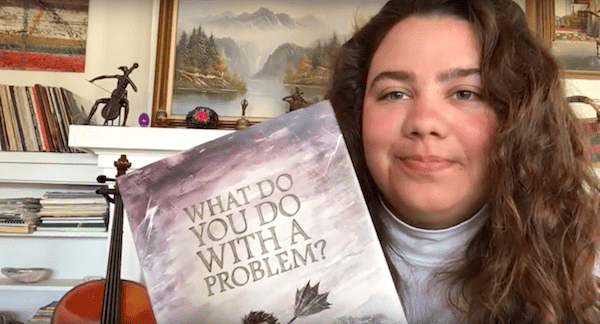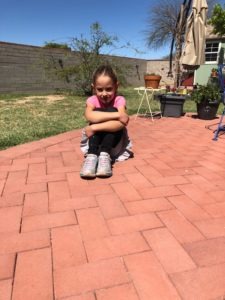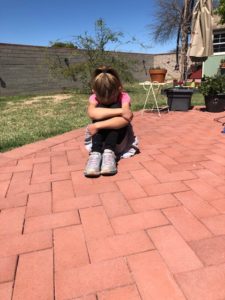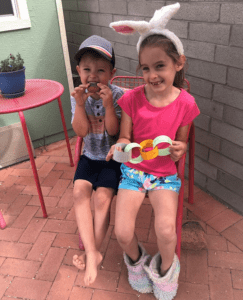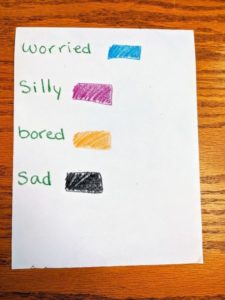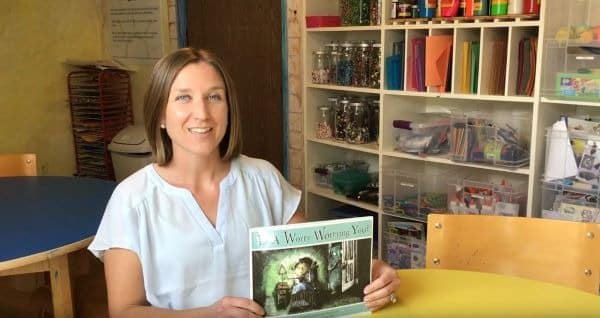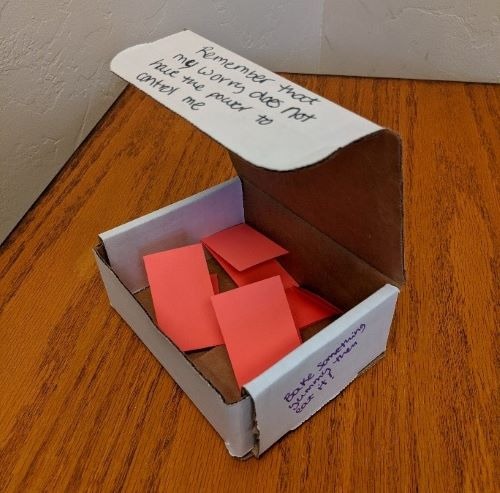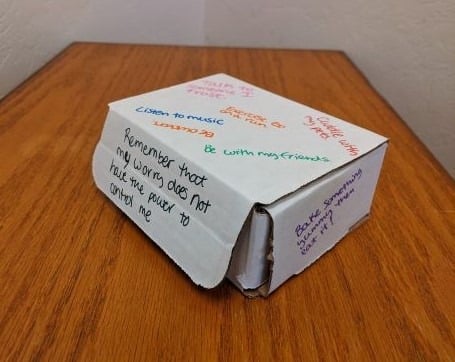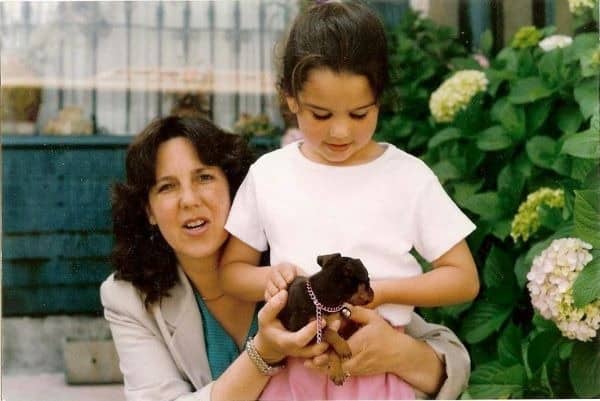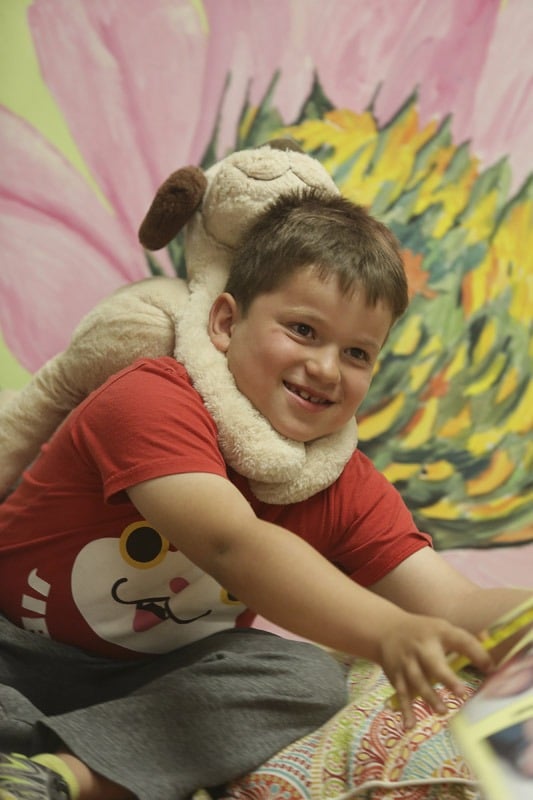What do you do with a problem?
Online curriculum for children and families impacted by grief
If you have questions or would like guidance around this curriculum, contact us! We are still available by phone and email. Leave us a message and we will get back to you promptly.
(520) 322-9155 | [email protected]
Topic: Problem Solving
No one likes having a problem! Problems show up uninvited, making us feel worried and annoyed. We can pretend our problems don’t exist, we can hide from them, and we can constantly worry about them. Usually when we do these things, we don’t feel better. In fact, we end up feeling worse. When we face our problems, we can start to feel better because it means we have an opportunity to solve them and find hope.
We understand that facing our problems can be stressful and scary. These different activities may help our bodies and our minds feel prepared to face our problems…
Start this activity by following along with Serena as she reads “What Do You Do With a Problem?” written by Kobi Yamada and Illustrated by Mae Besom. Thank you to the Publisher of this book, Compendium!
Our Bodies
The Turtle
- Start by standing with your feet apart and your shoulders relaxed.
- Next, bring your bottom down to your feet and sit on the floor. Your knees should be bent and your feet flat on the floor.
- Now, bring your legs in close to your body and wrap your arms around them.
- Take a deep breath and put your head down on top of your knees. You may even close your eyes. Now, staying there, give yourself a big squeeze and slowly count to 5.
- You can do The Turtle as long as you need to or want to. You may stop when your body feels calm and safe.
The Butterfly
- Start by sitting or standing, whichever is more comfortable, and hold your arms straight out in front of your body.
- Bring your left hand on your right shoulder. Bring your right hand on your left shoulder.
- Gently use your hands to squeeze your shoulders and take a deep breath in.
- Blow your deep breath out and relax your hands on your shoulders. Think of it as, “breathe in and squeeze – breath out and release.” You may even close your eyes.
- You can do The Butterfly as long as you need to or want to. You may stop when your body feels calm and safe.


Spaghetti Body
- Have you seen cooked spaghetti noodles? They are wiggly and loose, almost like they feel relaxed. When you feel tension in your body, you can make your body loose like spaghetti noodles. To get your Spaghetti Body, your body needs to go from tense and tight to loose and relaxed.
- Let’s start with our hands: make a fist and squeeze tightly! Take a deep breath in/out and relax your hands, wiggle your fingers, and make your hands very loose.
- Now try your arms: hold them down at your side and make them as straight and tight as you can. You can even make a fist again! Take a deep breath in/out and relax your arms/hands. Let them hang loosely at your sides.
- Now, try your whole body! Make your body as tight as you can! Take a deep breath in/out and totally relax: let your body feel wiggly, loose and relaxed.
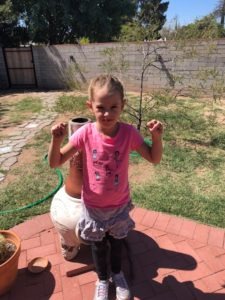

Our Minds
Activity: Safe Place Imagery
Draw a picture of a safe place. This safe place can be real or imaginary. It does not matter what this place is as long as you feel safe, calm, and comfortable when you picture yourself there. When you have a problem, picture your safe place in your mind to help you feel better.
Our Bodies & Minds
Activity: Chuck-It Bucket
Supplies Needed:
- A bucket, bin or box
- Paper slips
- Something to write with
Steps:
- Place an empty bucket, bin, or box somewhere in your house where it is easily accessible for everyone.
- Make sure to keep paper and things to write with next to the bucket.
- When someone in the family experiences a problem, they can write it down or draw a picture of it.
- Then, let it go by crumpling it into a ball and chucking it away into the bucket!
Not only can this help externalize problems and remove them from the forefront of our minds, it allows us to be silly and have some fun together.
We’d love to see what you working on!
Share how you’re doing this activity with us by sending pictures to [email protected]! And remember, we are available for support at (520) 322-9155.
Si tiene preguntas o necesita guía o apoyo, nos puede contactar a Tu Nidito:
(520) 322-9155 | [email protected]
Tema: Resolviendo problemas
¡A nadie le gusta tener problemas! Los problemas se aparecen sin ser invitados, haciéndonos sentir preocupados e irritados. Podemos pretender que nuestros problemas no existen, nos podemos esconder de ellos y podemos preocuparnos constantemente de ellos. Usualmente, cuando hacemos eso, no nos sentimos mejor. De hecho, terminamos sintiéndonos peor. Cuando enfrentamos nuestros problemas, podemos empezar a sentirnos mejor porque quiere decir que tenemos la oportunidad de resolverlos y encontrar esperanza.
Entendemos que enfrentar nuestros problemas puede ser estresante y te puede dar miedo. Estas diferentes cosas pueden ayudar a nuestros cuerpos y nuestras mentes a sentirse preparados para enfrentar nuestros problemas.
Lectura de libros: ¿Qué haces tú con un problema? (What Do You Do with A Problem?) escrito por Kobi Yamada e ilustrado por Mae Besom. ¡Gracias a la editora de este libro, Compendio!
Nuestros cuerpos
La Tortuga
- Comienza por ponerte de pie con tus pies separados y tus hombros relajados.
- Ahora, lleva tu trasero a tus pies y siéntate en el piso. Tus piernas deben estar dobladas y tus pies apoyados en el suelo.
- Ahora, lleva tus pies cerca de tu cuerpo y envuelve tus brazos alrededor de tus pies.
- Da un respiro profundo y agacha tu cabeza encima de tus rodillas. Incluso, puedes cerrar tus ojos. Ahora, estando en esa posición, date un fuerte apretón y cuenta hasta 5.
- Puedes hacer la Tortuga por el tiempo que necesites o quieras. Puedes terminar cuando tu cuerpo se sienta calmado y relajado.
La Mariposa
- Empieza por sentarte o ponerte de pie, lo que sea mas cómodo para ti y extiende tus brazos en frente de tu cuerpo.
- Lleva tu mano derecha a tu hombro izquierdo. Ahora, lleva tu mano izquierda a tu hombro derecho.
- Suavemente usa tus manos para darle un apretón a tus hombros y tomar un respiro profundo.
- Da un respiro profundo y relaja las manos en tus hombros. Piensa así, “Inhala y aprieta – exhale y relaja” Incluso puedes cerrar tus ojos.
- Puedes hacer la Mariposa por el tiempo que necesites o quieras. Puedes terminar cuando tu cuerpo se sienta calmado y relajado.


Cuerpo de espagueti
- ¿Has visto un espagueti cocido? Es ondulante y blando, se siente casi como relajado. Cuando sientes tensión en tu cuerpo, puedes hacer que tu cuerpo se sienta relajado como un espagueti cocido. Para tener un cuerpo de espagueti, tu cuerpo necesita ir de tenso, a relajado.
- ¡Vamos a empezar con nuestras manos! Vamos a cerrar el puño y vamos a apretarlo fuertemente. Da un respiro profundo/exhala y relaja tu mano, sacude tus dedos, y relaja tus manos.
- Ahora, trata con tus brazos. Ponlos a los lados de tu cuerpo y ponlos lo mas derecho y tensos que puedas. Incluso puedes cerrar el puño si gustas. Toma un respiro profundo/ exhala, relaja tus brazos y manos. Déjalos relajados al lado de tu cuerpo.
- ¡Ahora, trata con todo tu cuerpo! Pon tu cuerpo lo más tenso que puedas! Toma un respiro profundo/ exhala y relájate totalmente: Dale la oportunidad a tu cuerpo de sentirse relajado y suelto.


Nuestras mentes
Actividad: Imagina tu lugar seguro
Haz un dibujo de tu lugar seguro. Este lugar seguro puede ser real o imaginario. No importa lo que sea este lugar mientras te haga sentir seguro, calmado y cómodo, cuando te imagines en el. Cuando tengas un problema, imagina tu lugar seguro para que te sientas mejor.
Nuestros cuerpos y nuestras mentes
Actividad: Bote de Tiradero
Materiales necesarios:
- Un bote o caja
- Hojas de papel
- Marcadores o lapices
Pasos:
- Pon un bote vacío, contenedor o caja en algún lugar de tu casa que sea accesible para todos.
- Asegúrate de poner papel y plumas enseguida del bote.
- Cuando alguien en la familia tengo un problema, pueden escribir el problema o dibujarlo.
- Después, lo pueden hacer bolita y tirarlo en el bote.
No solo te ayuda a sacar tus problemas y removerlos de tu mente si no que te ayudara a reír y divertirte.
¡Nos encantaría ver tus creaciones!
Comparte con nosotros mandando una fotografía de tu trabajo a [email protected]! Y recuerda, estamos disponibles para apoyarte al (520) 322-9155.

